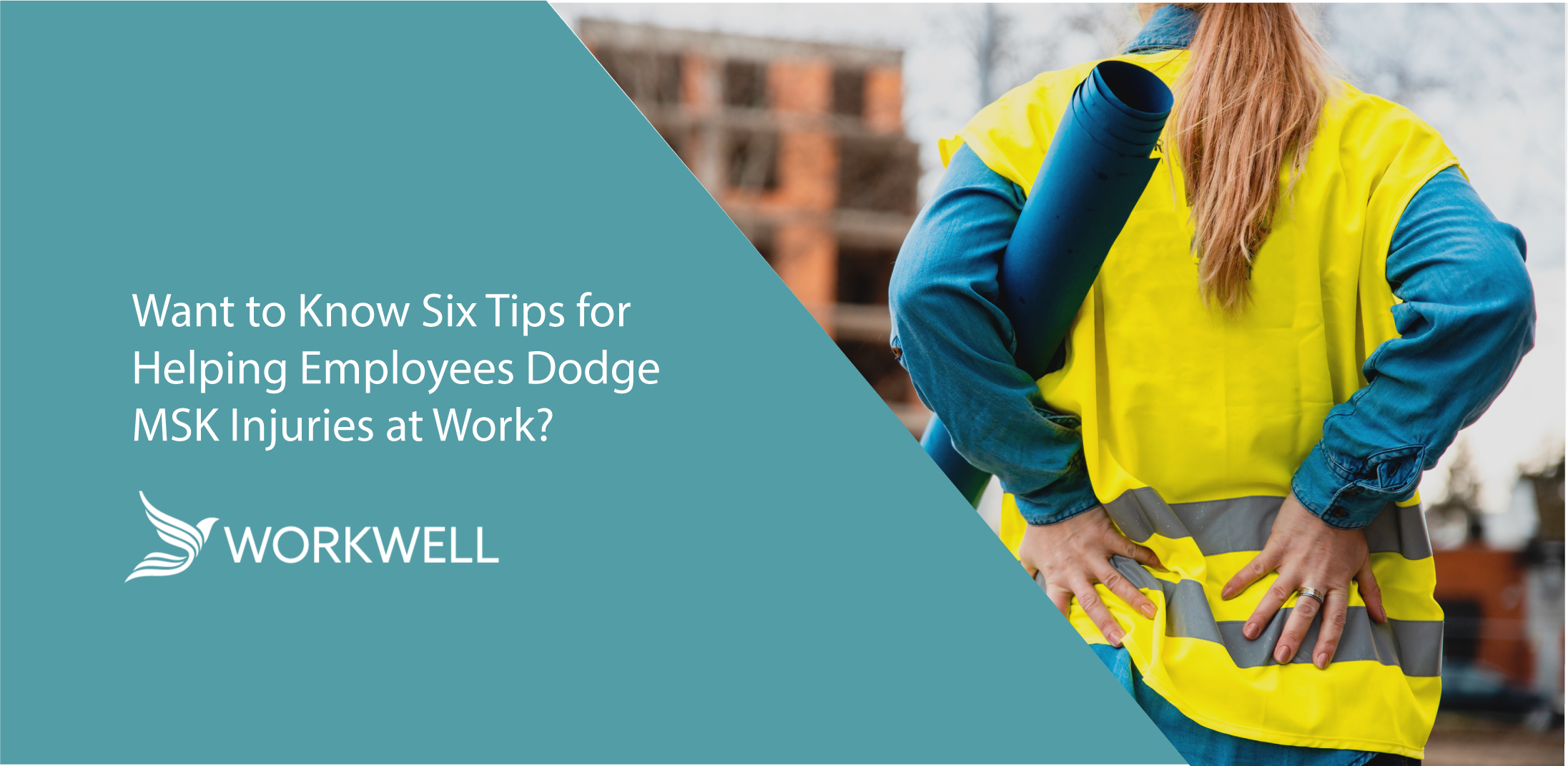Prevent It


Want to Know Six Tips for Helping Employees Dodge MSK Injuries at Work?
Various jobs expose employees to MSK injury risk factors, such as overexertion, awkward postures, and repetitive motions. Employees can develop injuries over time, whether loading cargo, working on a production line, or providing hospital care. Even sedentary computer users can develop painful repetitive motion injuries (RMI) such as carpal tunnel syndrome.
According to OSHA, musculoskeletal disorders (MSD) can be prevented by reducing health risks and providing workers with the necessary resources to perform their jobs safely. But while MSK injuries are common, they’re not inevitable. You can build MSD prevention into daily operations by eliminating risk factors, embracing ergonomic practices, and enabling proactive healthcare. Encourage employees to become vigilant about protecting their wellbeing and emphasize to staff that performing jobs in the safest way possible – not the fastest – is the goal.
Six Tips for Avoiding MSK Injuries at Work
By adopting some of the ideas below, organizations can significantly reduce the number and severity of injuries in their workforce.
- Proper Work Techniques – Performing a job “incorrectly” is easy to do, making improper work habits a major contributor to MSDs. Companies should ensure employees are trained in ergonomics and are doing their job activities appropriately. For example, are employees maintaining good posture and lifting loads correctly? Are workers using the right tools? Minor adjustments to people’s actions can make a big difference.
- Warm Ups/Stretching Exercises – Stretches and warm-up exercises prepare a person’s body for the work ahead, helping workers avoid back strain while lifting and carrying. Stretching breaks can also provide relief after long periods of repetitive motions or intense physical labor.
- Training – Training by a qualified ergonomics professional can help employees learn proper work techniques that prevent injuries and educate staff about risk factors, proper body mechanics, and self-care. Consider adding work conditioning programs to boost people’s physical strength and performance
- Protective and Ergonomic Equipment – Safe work habits are easier to maintain when supported by the right equipment. For example, personal protective equipment can reduce vibration and make lifting and moving loads easier. Computers users work more comfortably when equipped with adjustable chairs, armrests, and modified workstations
- Job Rotation and Modifications – Where possible, modify or rotate work activities to help workers avoid physical exhaustion. Job rotation can minimize someone’s exposure to awkward positions and overexertion, leading to injuries. If an employee’s symptoms worsen or a specific activity consistently causes discomfort, reassess the task setup and look for alternative methods. Also, invite workers to recommend their ideas for doing jobs better
- Early intervention – Employees should also be encouraged to recognize and report early symptoms of MSDs. Bringing certified healthcare professionals onsite can provide employees with early intervention treatment services, preventing their discomfort from becoming a full-blown debilitating MSD.
Adopting these and other recommendations can help organizations lower their workforce’s injury rates and associated compensation costs, reducing employee turnover and improving productivity.
Select a topic
- View all topics
- WorkWell
- Safety Culture
- Onsite PT Clinics
- Ergonomics
- Injury/Illness Prevention
- Employee Wellness
- MSK
- Industry News
- POET
- Safety
- Managed Services
- Manufacturing
- Functional Job Descriptions
- Onsite PT
- FJD
- Post Offer Employment Training
- Provider Network
- Blog
- Events
- Featured
- OSHA
- Work Readiness
- Company News
- Job Coaching
- MSK Strategy
- Musculoskeletal
- PT Solutions Employee
- Presenteeism
- Push/Pull
- Recruitment
- Training
- Trust
- Worksite Rounds
Subscribe to Our Blog
Practical tips focused on workplace injury prevention.
Featured Posts
postsTags [BlogPost 178613021575 Shift to Prevention and End the Game of Whack-a-Mole, BlogPost 125116526205 Why now is the time for a Managed Onsite MSK Clinic]
.png)

